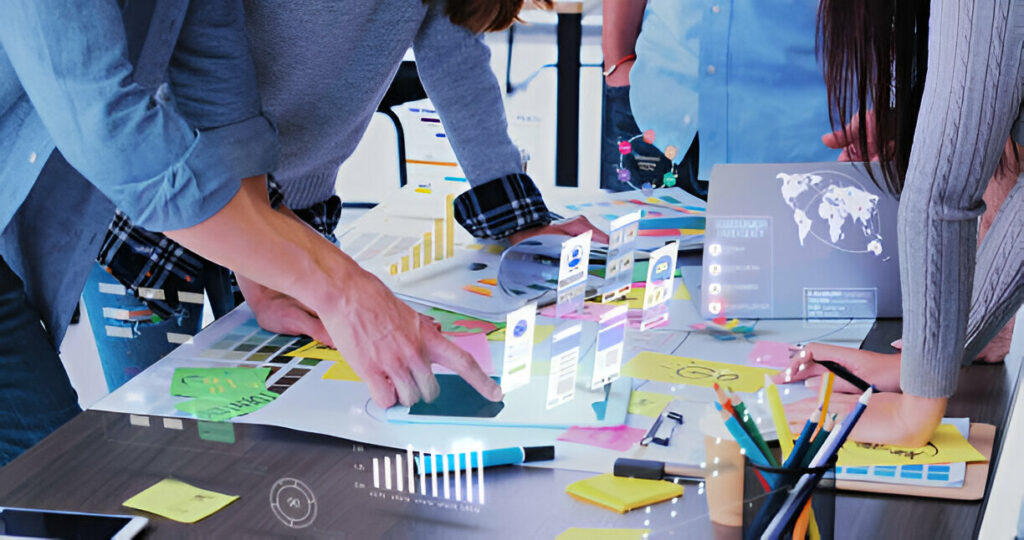Industrial Design has always been the bridge between innovation and usability. It plays a vital role in shaping the products we use daily — from the smartphone in your pocket to the ergonomic chair you work from. As we look toward the future, the field of Industrial Design is poised for a transformation powered by sustainability, technology, and human-centered design.
In this blog, we’ll explore the key trends redefining the future of Industrial Design, what designers should watch out for, and how businesses can stay ahead in an evolving product landscape.
What is Industrial Design?
At its core, Industrial Design is the process of designing products for mass production with a focus on form, function, and user experience. It combines art, science, and technology to create products that are not only beautiful but also practical and efficient.
Industrial designers work at the intersection of creativity and engineering, collaborating with manufacturers, marketers, and end-users to shape the physical and emotional experience of products.
Trends in Industrial Desing
Trend 1: Sustainable and Eco-Friendly Design
Sustainability is no longer a niche concept—it’s a necessity. With growing consumer awareness and environmental regulations, Industrial Design is being reshaped by a demand for eco-conscious products.
Here’s what sustainable design includes:
- Use of recycled and biodegradable materials
- Designing for disassembly and recycling
- Energy-efficient manufacturing processes
- Reducing packaging and waste
Products designed with a circular economy in mind are becoming a standard. Future designers must consider the product lifecycle from cradle to cradle—not cradle to grave.
Trend 2: AI and Generative Design
Artificial Intelligence (AI) is influencing many industries, and Industrial Design is no exception. Generative design, driven by AI, allows designers to input goals and constraints while software generates multiple design iterations.
Benefits of generative design:
- Optimized performance and material usage
- Reduced design and prototyping time
- Innovations that go beyond human imagination
This shift is transforming how products are conceived, bringing more efficiency and innovation to the design process.
Trend 3: Integration of Smart Technology
As the Internet of Things (IoT) becomes mainstream, products are expected to be “smart.” Designers must now consider how to integrate sensors, data collection, and connectivity into their designs.
In modern Industrial Design, this means:
- Designing for seamless human-device interaction
- Creating intuitive digital-physical interfaces
- Focusing on minimalism while including tech functionality
Think smart home devices, wearable tech, and connected appliances—all of which demand sleek yet intelligent designs.
Trend 4: Personalization and Modular Design
Consumers today seek personalized experiences, and this demand is reflected in product design. Mass production is gradually making way for mass customization.
Key strategies include:
- Modular design systems for mix-and-match functionality
- Configurable features (color, size, usage)
- 3D printing for on-demand customization
Incorporating personalization enhances user satisfaction and creates a stronger emotional bond with the product—something future designers must capitalize on.
Trend 5: Digital Prototyping and Virtual Testing
The evolution of software tools now allows for advanced virtual modeling, testing, and prototyping. This shift reduces time-to-market and lowers production costs.
Popular tools include:
- CAD and CAM software
- AR/VR simulations for real-time testing
- Digital twins to predict performance
This enables a design-first approach where virtual prototypes are fine-tuned before any material is committed.
Trend 6: Cross-Disciplinary Collaboration
The role of the industrial designer is evolving from a specialist to a multidisciplinary collaborator. Future product innovation depends on teamwork across various domains.
Successful design teams now involve:
- UX/UI experts
- Data analysts
- Engineers and material scientists
- Psychologists and market researchers
By embracing a cross-functional mindset, Industrial Design becomes more inclusive and innovative.
Trend 7: Emphasis on User-Centered Design
User-centered design remains a key pillar in the future of Industrial Design. This approach ensures that products are built around the real needs, preferences, and limitations of users.
It includes:
- Extensive user research and personas
- Usability testing during prototyping
- Accessibility features for diverse audiences
Designers must continually empathize with users to create products that are not only functional but also meaningful.
Trend 8: Emotional Design and Storytelling
Design is no longer just about form and function—it’s about feeling. Emotional design plays an increasingly important role in how products connect with users on a personal level.
This includes:
- Evoking nostalgia or happiness through color, material, or form
- Designing for multi-sensory experiences
- Creating narratives that resonate with users’ lifestyles
Storytelling within Industrial Design helps brands stand out in crowded markets and build lasting loyalty.
Trend 9: Globalization and Cultural Adaptability
As products are marketed globally, designers must be sensitive to cultural differences and localized needs.
Things to consider:
- Cultural symbolism and color usage
- Ergonomics adapted for different body types and norms
- Language-neutral icons and universal design principles
Globalized design thinking ensures products resonate across diverse audiences without alienating local preferences.
Trend 10: Minimalism and Aesthetic Simplicity
Minimalism is more than a design style—it’s a reflection of modern consumer values. Clean lines, neutral colors, and purposeful simplicity are trends that continue to influence Industrial Design.
Minimalist design helps:
- Reduce production costs
- Improve user interaction
- Align with sustainable goals
As digital clutter increases, users seek products that bring calm and clarity through design.
Challenges Shaping the Future of Industrial Design
Despite exciting trends, the future brings challenges:
- Rapid tech advancements creating skill gaps
- Balancing functionality with sustainability
- Ethical concerns around data and AI
- Cost constraints in sustainable manufacturing
Industrial designers must navigate these with agility, innovation, and integrity.
How Designers and Brands Can Prepare
To stay ahead in Industrial Design, here are a few steps:
- Stay updated with trends through continuous learning
- Master digital design tools and prototyping software
- Collaborate beyond your discipline
- Conduct real-world user research
- Prioritize sustainability and inclusivity
Investing in education and agile practices will allow both individuals and companies to remain competitive in this fast-evolving field.
Conclusion
The future of Industrial Design is bright, dynamic, and deeply transformative. With advances in technology, a growing focus on sustainability, and evolving user expectations, designers are at the forefront of shaping meaningful experiences.
You can also visit Industrial Desing Community – Core77
By embracing these trends, being open to cross-disciplinary ideas, and staying attuned to user needs, designers can create products that are not only innovative—but also impactful, inclusive, and inspiring.




